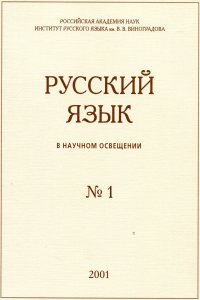On the phenomenon of cultural remotivation in loan translation: cat’s gold and cat’s silver in mineralogical terminology
Abstract:
This article is devoted to the Russian mineralogical terms koshach'ye zoloto ‘cat’s gold’ and
koshach'ye serebro ‘cat’s silver’, which most often refer to mica of golden and silver shades
respectively. These word collocations appeared in the Russian language in the second half of
the 18th century as a result of loan translation of the German words Katzengold and Katzensilber.
The authors trace the history of the use of these expressions both in Russian mineralogy and
in Western European sources, and also reconstruct their motivation in German, coming to the
conclusion that the first part of these expressions (‘cat’) points at the falsity of “gold” or “silver”.
The authors determine the reasons why the image of a cat in the source language is associated
with the semantics of falsehood. The authors analyze the nature of cultural remotivation
of these combinations in the Russian language, which consisted in obscuring their original
connotations and creating a new connotative background after loan translation.


